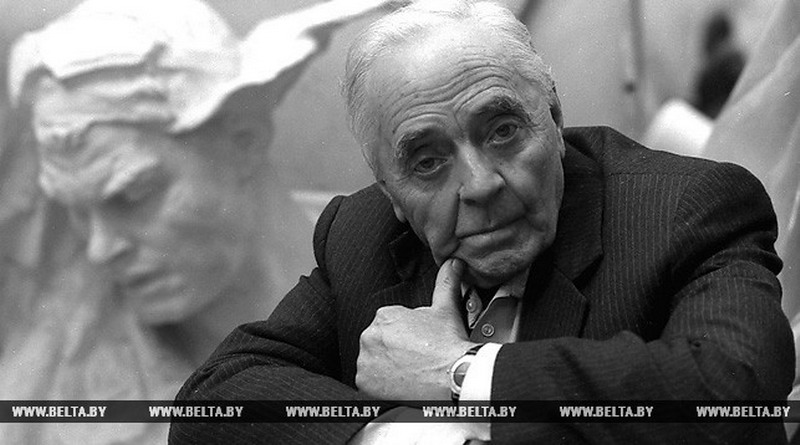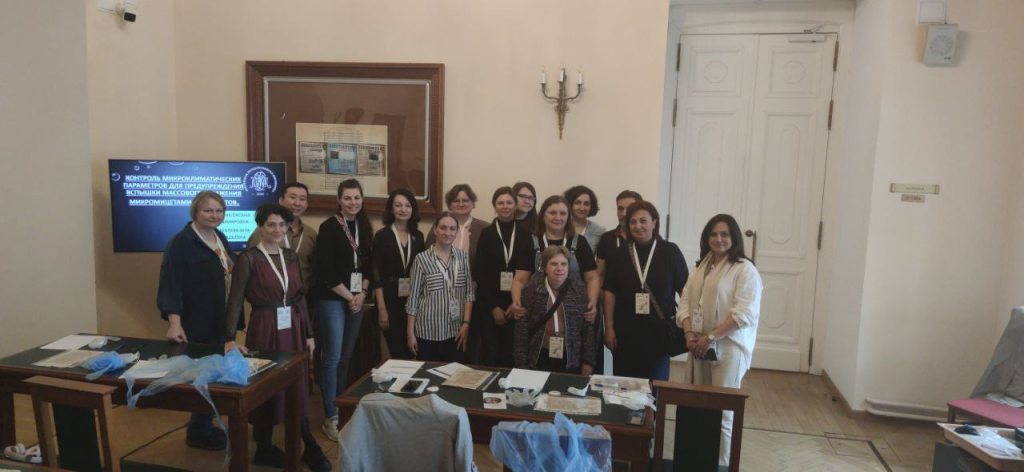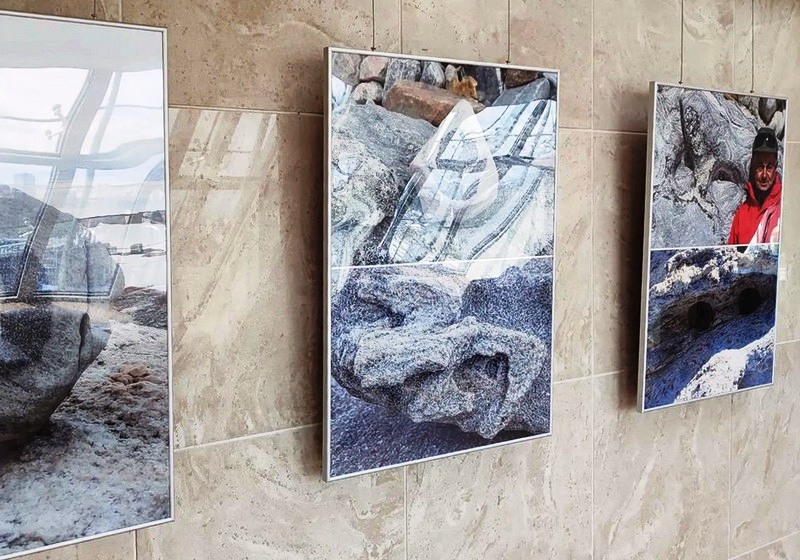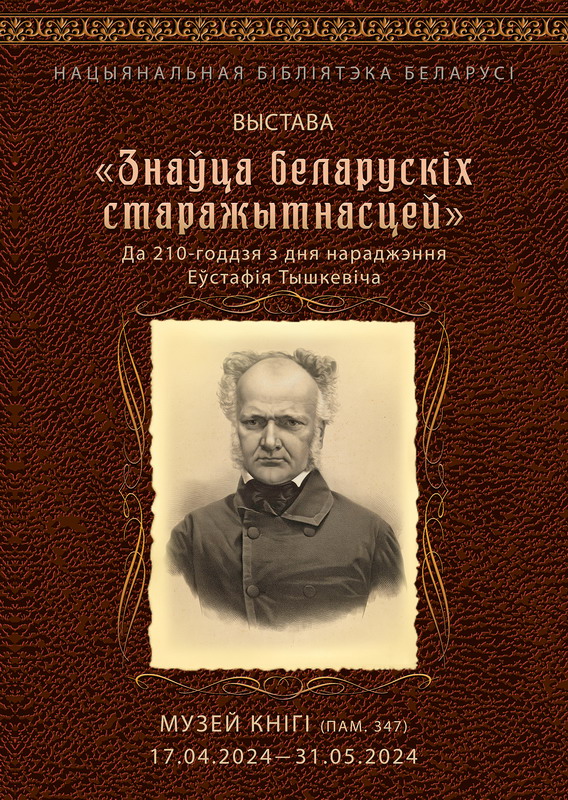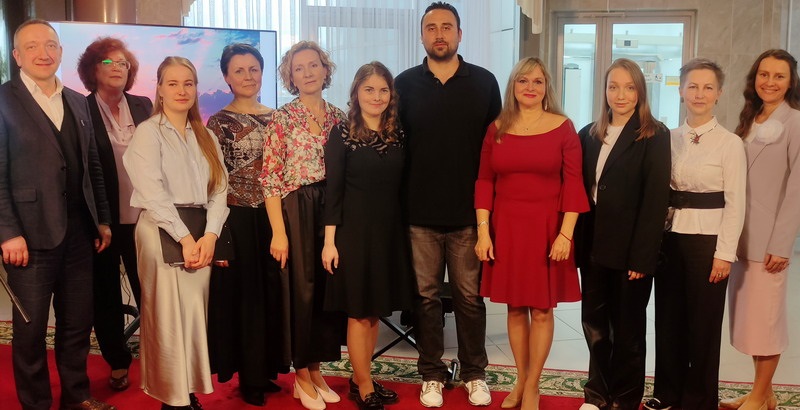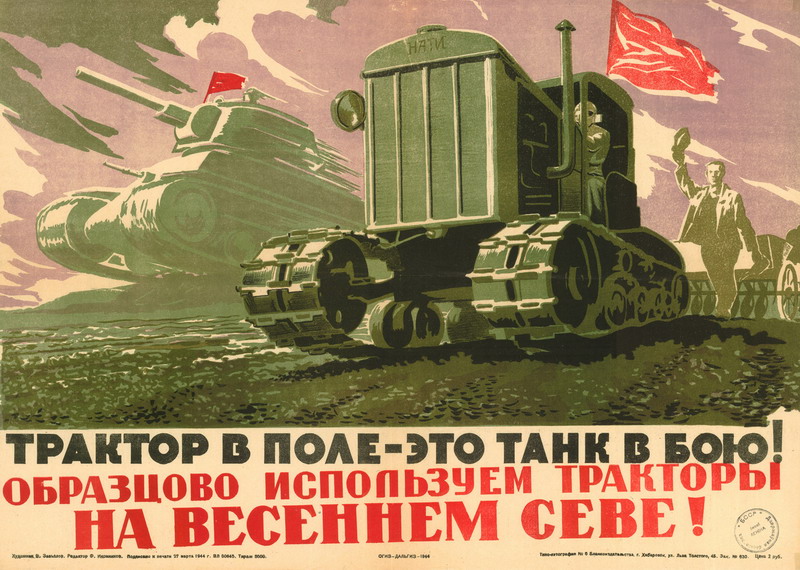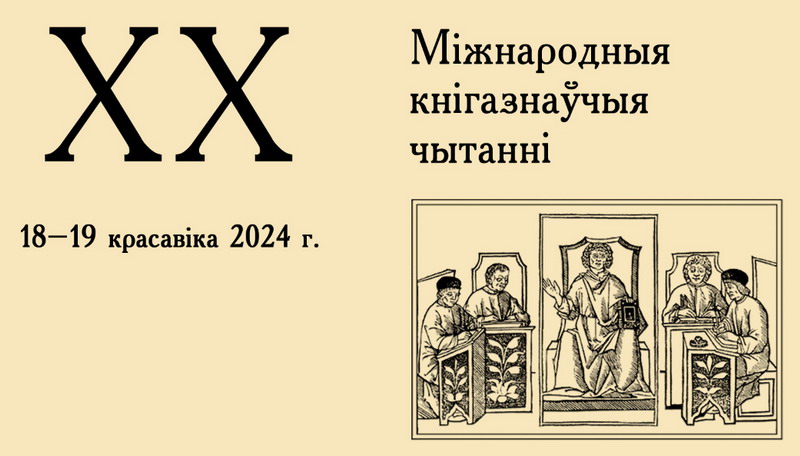The artist's name is well known not only to connoisseurs of Belarusian art of the 20th century but also to numerous guests of our country. Indeed, among the most famous tourist sites are the memorial complex “Brest Hero Fortress, Mound of Glory, Victory Monument in Minsk and much more, and Andrey Bembel is the author and co-author of the monuments.
The artist was born in Velizh town of the Vitebsk province (now the Smolensk region, Russia) in a large family. Onufriy Bembel, his father, served as an accountant in the county treasury. Stephanida, his mother, was engaged in housekeeping. Bembel received his primary education at the men's gymnasium in Velizh, there he attracted attention with his drawings. The meeting with the famous sculptor M. Kerzin was very important in the choice of Bembel's life path was, Kenzin taught at the Velizh art school, and then at the Vitebsk Art College, where studied the future artist. From 1927 to 1930 A. Bembel, a student of the Leningrad Higher Art and Technical Institute (at the present time, the St. Petersburg State Academic Institute of Painting, Sculpture and Architecture named after I.E.Repin at the Russian Academy of Arts), learns the skill of famous sculptors and teachers R. Bach, V. Simonov and M. Manizer. Andrey Bembel is one of the rare artists whose talent was appreciated at the very beginning of his career. He chose one of the most difficult types of sculpture - a bas-relief.
In 1931 A. Bembel returned to Belarus and already at the first exhibitions in Minsk, where he took part, he demonstrated high professionalism.
In 1932, according to the project of the famous architect I. Langbard, construction of the Government House began in Minsk, a grandiose architectural and sculptural complex with various forms of sculpture and painting. A large group of Belarusian sculptors headed by M. Kerzin worked on the decoration of the premises: Z. Azgur, G. Izmailov, A. Orlov, A. Glebov and A. Bembel. It is Bembel who created the most difficult part of the work: a forty-four-meter bas-relief frieze that adorns the corridors of the Congress Hall (together with the sculptor V. Ritter). Continuing to improve the technique of the bas-relief, A. Bembel in subsequent years worked mainly on the design of the interiors of public buildings: several compositions in the hall of the Presidium of the Supreme Council of the Republic (not preserved), a number of relief figures in the auditorium of the House of Officers in Minsk, performed bas-reliefs for the pavilion of Belarus on The All-Union Agricultural Exhibition in Moscow, as well as portrait medallions for the Opera and Ballet Theater in Minsk. In 1938, the sculptor was awarded the title of the Honored Art Worker of the BSSR.
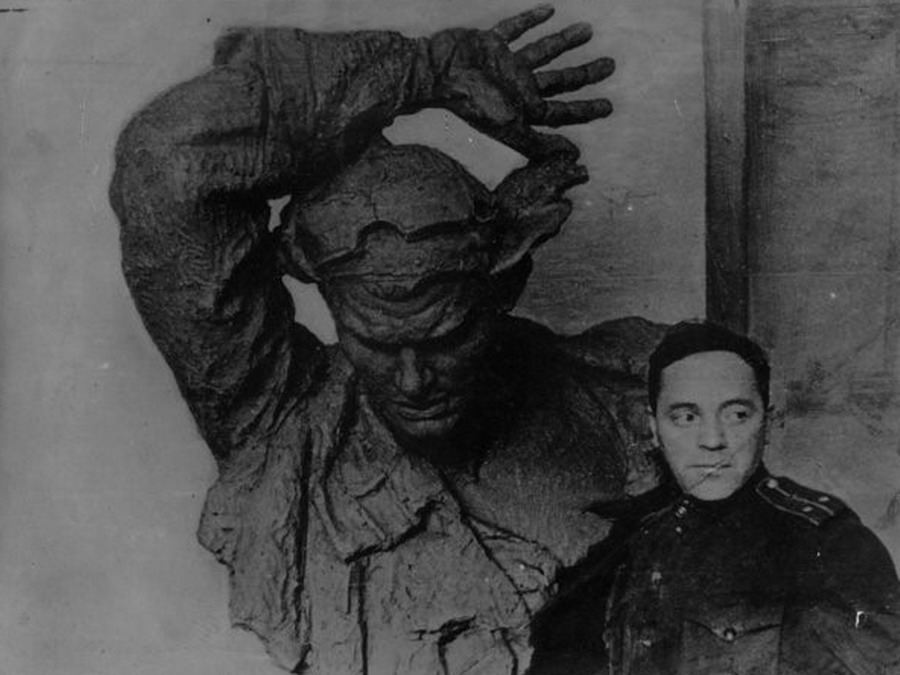
A. Bembel when creating a bust of M. Gastello, 1943
From the first days of the Great Patriotic War, Andrey Bembel was in the ranks of the Red Army. After graduating from a short-term military engineering school, Bembel served in the engineering troops, and in early 1943, together with other artists, was recalled to the Central Headquarters of the partisan movement. Here he created his first and main work of the war years - a compositional portrait of N. Gastello (bronze, 1943). None of the sculptors who later turned to this image and other war heroes did not escape the hypnotic influence of A. Bembel's work.
At this time, the artist is also working on a project for a monument to the heroes of Stalingrad, a bas-relief "Belarusian partisans", portraits of Heroes of the Soviet Union: F. Pavlovsky, D. Gulyaeva, P. Kalinin.
Bembel returned to the liberated Minsk together with the headquarters on July 7, 1944. One of the first significant works of the artist after demobilization was a portrait of A.M. Matrosov (1946). The 1950s was the heyday of the master's portrait work. His models were the people of different professions, ages, interests, social status. Among the most significant works by A. Bembel are dedicated to the historical figures of the past such as the monument to the Russian scientist D. Mendeleev, installed in 1952 in front of the building of the chemical faculty of Moscow State University, easel composition "Adam Mitskevich" (1979), portraits of Y. Kupala (1978), A. Blok (1980), I. Shamyakin, L. Schemelev and others. Most of the sculptor's portrait works are kept in the National Art Museum of the Republic of Belarus.
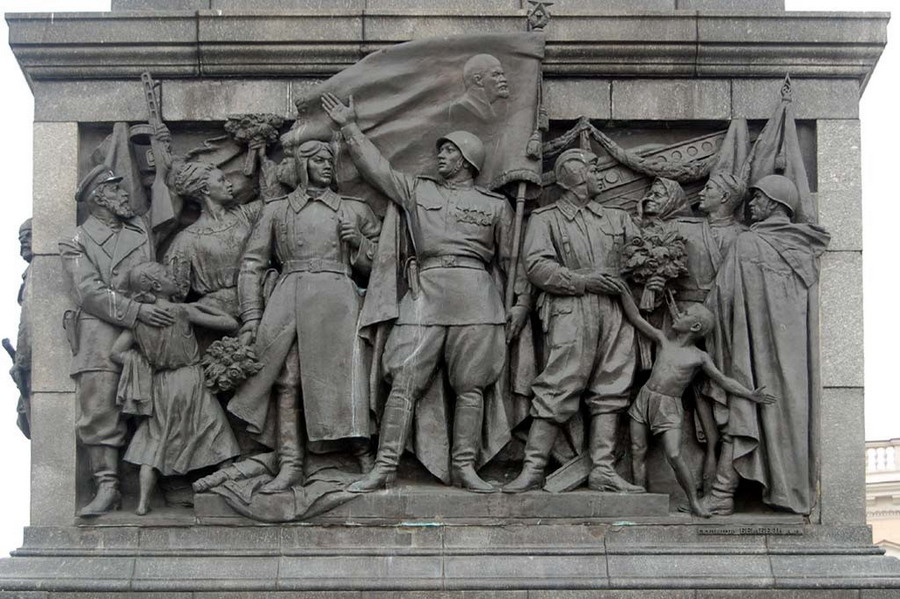
A. Bembel. Composition of the main facade of the Victory Monument in Minsk (1954)
The sculptor was engaged in the restoration of large sculptural ensembles damaged by the war. The high relief "May 9, 1945", the composition of the Victory Monument in Minsk (1954), is one of the most important works of the sculptor.
In 1955 Bembel was awarded the honorary title of People's Artist of the BSSR. His name is also associated with the creation of the memorial complex "Brest Fortress-Hero" (as part of a creative group headed by the People's Artist of the USSR, sculptor A.P. Kibalnikov), and the famous monument "Mound of Glory" became a real masterpiece of the master (architect O.A. . Stakhovich, 1969). The sculptor was awarded the State Prize of Belarus (1970) after its' creation.
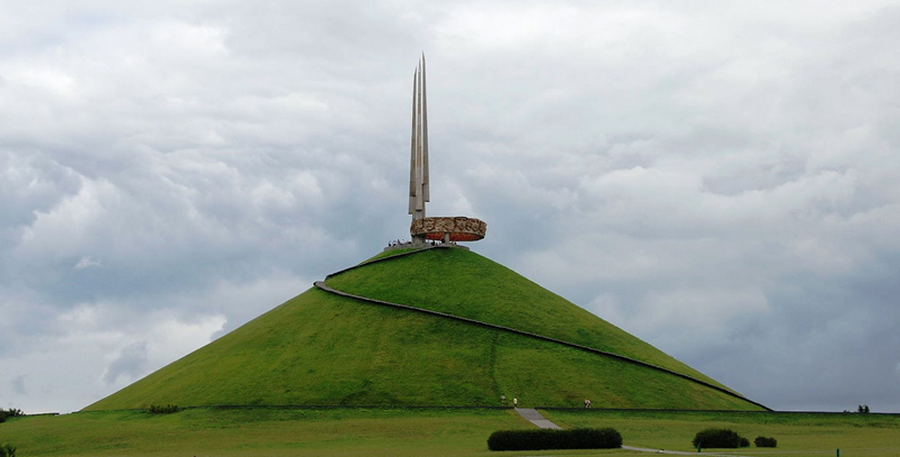
The memorial complex "Mound of Glory" (architect O. Stakhovich, 1969)
Andrey Bembel belonged to the glorious galaxy of artists-educators, for whom pedagogy became a matter of life. He was one of the organizers and the first teachers of the Minsk Art School (1948-1950) and the Belarusian Theater and Art Institute (now the Belarusian Academy of Arts), in which he headed the department of sculpture for many years (1953-1978). Pedagogical talent, methodological skills, breadth of erudition allowed him to successfully form the necessary professional qualities, high citizenship and an active life position in young artists.
He gave a start in life to several generations of Belarusian sculptors. Among his students were famous figures of Belarusian art Anatoly Anikeichik, Lev Gumilevsky, Valentin Zankovich, Ivan Misko and others. He was one of those masters of Belarusian art, whose work is almost devoid of failures, who succeeded in everything, no matter what they took. Bembel was not only a master, whose works invariably gained wide popularity and long life, but also a favourite of the time.
From the memoirs of the People's Artist of Belarus L.D. Schemeleva: “Andrey Bembel is one of the most interesting creative personalities in the Soviet fine arts. Original, large-scale, emotionally attractive. Of course, he is a product of the system. Political? Yes, but not by protocol! And in general, this did not prevent him from being an interesting person. And what kind of speaker, how he held the audience ... He was a charm of young hearts! There was no age boringness in him. He never observed any distance with people, except comradely, human. Yes, he was unpredictable in everything ...".
Andrey Bembel was active in public life. He was elected a member of the Central Committee of the Communist Party of Belarus, was a deputy of the Supreme Soviet, Chairman of the board of the Union of Artists of Belarus.
Andrey Bembel died in 1986. The Museum of Contemporary Belarusian Sculpture named after A.O. Bembel. was organized in 1995 in Minsk in his house-workshop. The merits of Bembel in the development of the fine arts were awarded the Orders of Lenin, the October Revolution, two Orders of the Red Banner of Labor, the Order of the Badge of Honor, medals and certificates of honor, the silver medal named after Mitrofan Grekov. In 2005, the Ministry of Communications and Informatization of the Republic of Belarus introduced into the post circulation an artistic envelope with the original stamp “100 years since the birth of A. O. Bembel”.
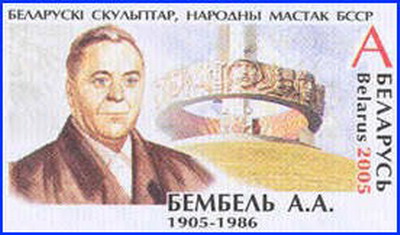
More information about the life and work of the cult Belarusian sculptor of the twentieth century can be found in the publications stored in the collections of the National Library of Belarus through the electronic catalogue.
Bibliology Research Department

